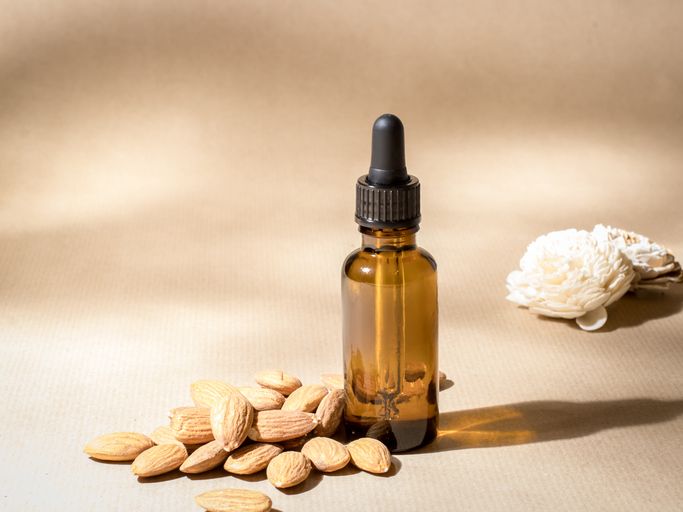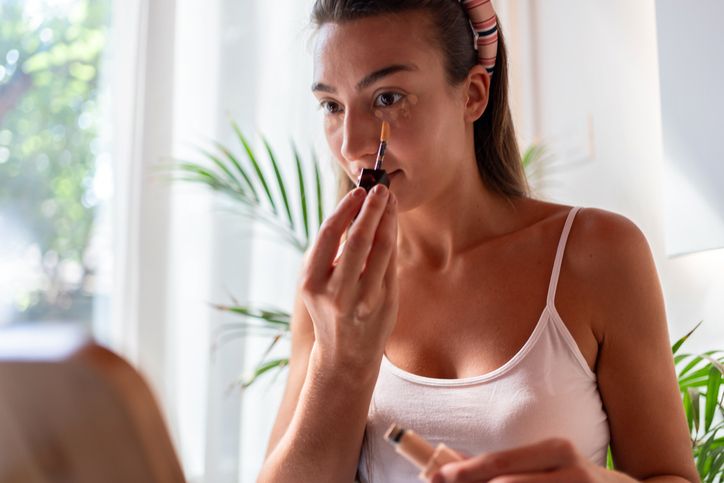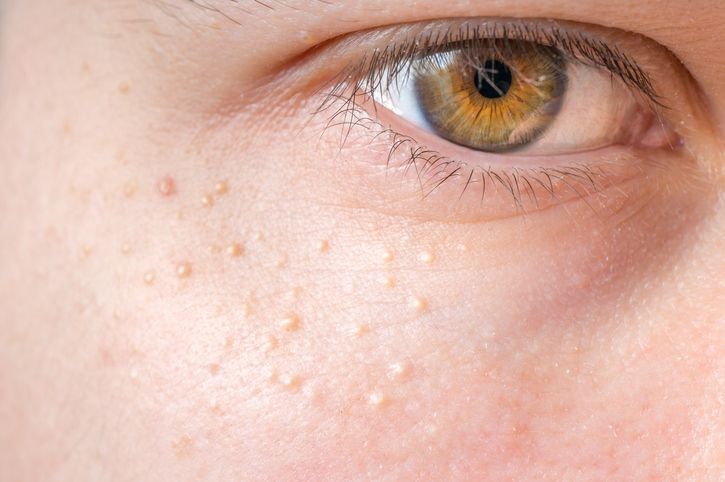- Home
- Trend
- Weight Loss Strategies
- Acne Tips
- Hair Health Information
- Blemish Removal Tips
- Acne Scar Removal Tips
- Muscle Building Techniques
- Intimate Care Tips
- Postpartum Intimate Care
- Eye Bags Wiki
- Tips for Face Slimming
- Secret of Permanent Hair Removal
- Breast Enlargement Tips
- Cure to Snoring
- Marionette Lines
- Skin-Tightening Secrets
Freckles are often seen as charming sun-kissed marks, but for many, they are an unwanted reminder of prolonged sun exposure. While some embrace their speckled skin, others seek ways to remove freckles permanently. But is that really possible? Do freckles fade over time, or are they here to stay? In this comprehensive guide, we’ll explore everything you need to know about freckles, their causes, treatments, and long-term solutions to help you achieve a flawless, even-toned complexion.
The Freckle Formation Process: What Happens Beneath Your Skin?
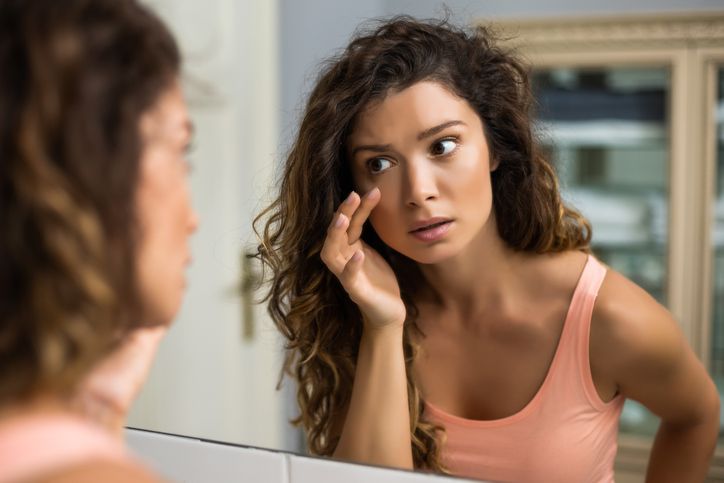
Before diving into how to get rid of freckles, it’s essential to understand how they form. Freckles, also known as ephelides, are small, flat brown spots that appear due to excessive sun exposure. Unlike moles or age spots, freckles develop when ultraviolet (UV) light stimulates melanin cells in the skin, causing them to produce more pigment.
Freckle Formation
Freckles occur when melanocytes, the cells responsible for producing melanin, become overactive in response to UV radiation.
A 2014 study published in the Journal of Investigative Dermatology found that freckle formation is largely influenced by UVB exposure, which penetrates the epidermis (the outer layer of the skin) and triggers increased melanin production. This is the body’s natural defense mechanism against sun damage, but in peoples' predisposed to freckling, the pigmentation is unevenly distributed, creating small pigmented spots.
Why Are Some People More Prone to Freckles?
Not everyone develops freckles. Their appearance is influenced by genetics, skin type, and sun exposure habits.
Genetics: The Role of MC1R and Other Genes
The MC1R gene, which is responsible for skin and hair pigmentation, plays a crucial role in freckle formation. A study in Nature Communications (2018) found that individuals with specific MC1R gene mutations were more likely to develop freckles, especially those with fair skin, red hair, or light eyes.
However, MC1R is not the only gene involved. Research from the American Journal of Human Genetics (2020) suggests that TYR, IRF4, and OCA2 genes also influence melanin distribution, contributing to both freckles and skin tone variation. This explains why some individuals with darker hair and eyes still develop freckles, though they may be less pronounced than in fair-skinned individuals.
Skin Type and Melanin Production
Skin type, classified using the Fitzpatrick Skin Type Scale, determines a people’s susceptibility to UV-induced pigmentation.
• Type I (Very Fair Skin) – Highly prone to freckles; burns easily, rarely tans.
• Type II (Fair Skin) – Develops freckles easily; burns often but tans minimally.
• Type III (Medium Skin) – Less prone to freckling; tans gradually.
• Type IV-VI (Darker Skin Types) – Less likely to develop freckles but may experience hyperpigmentation instead.
As fair-skinned individuals produce less eumelanin, their skin has a weaker defense against UV rays, leading to more freckles. However, darker-skinned individuals are not entirely immune—freckles can still appear but are often less noticeable due to higher overall melanin levels.
Will Freckles Go Away?
Many people wonder, "Do freckles fade over time?" The answer and freckle treatments depend on the type of freckles and lifestyle factors.
Transient vs. Persistent Freckles
There are two main types of freckles:
Ephelides (Common Freckles) – These appear in childhood and darken with sun exposure but tend to fade during winter or with reduced sun exposure.
Lentigines (Sun Spots) – Unlike common freckles, lentigines are more persistent and do not fade with seasonal changes. They are often caused by chronic UV exposure and tend to appear later in life.
How Long Do Freckles Last?
• Ephelides can lighten significantly within months when sun exposure is minimized.
• Lentigines are more stubborn and often require freckle removal treatments such as laser therapy, chemical peels, or intense pulsed light (IPL) therapy.
Does Age Affect Freckle Fading?
Yes. Freckles are most common in children and teenagers, often peaking in adolescence. A study in Pigment Cell & Melanoma Research (2016) noted that freckles in children tend to fade naturally with age, particularly as their skin adapts to UV exposure. However, in adults, especially those who experience chronic sun damage, freckles may persist or even develop into age spots (solar lentigines), which are harder to remove.
免費體驗
PicoCure Pigmentation Removal Treatment
1 Minute Self-Registration
Date should not be before minimal date
How to Lighten Freckles Naturally with Home Remedies?
For those looking to fade freckles without undergoing medical treatments, natural remedies can help lighten pigmentation and promote a more even skin tone. While results vary, many ingredients have skin-brightening properties that may reduce the appearance of freckles over time.
Home Remedies to Lighten Freckles
If you’re wondering how to get rid of freckles on the face naturally, several topical ingredients may help.
Vitamin C Serum – This powerful antioxidant brightens sun-damaged skin and helps lighten freckles by inhibiting tyrosinase, an enzyme responsible for melanin production. Studies in The Journal of Clinical and Aesthetic Dermatology (2019) suggest that daily application of vitamin C serum can improve hyperpigmentation and uneven skin tone over several months.
Licorice Extract – Rich in glabridin, this natural ingredient helps suppress melanin production, making freckles appear lighter. Research in The International Journal of Molecular Sciences (2021) supports licorice extract as an effective skin-brightening agent, particularly when used consistently.
Retinoid Cream – Retinoids like retinol and tretinoin accelerate cell turnover, exfoliating old and damaged skin while reducing the appearance of freckles and sun spots. A 2017 study in Dermatologic Surgery found that long-term retinoid use can improve uneven pigmentation and enhance skin renewal.
Aloe Vera – Contains aloesin, a compound that can slow down melanin production and gradually lighten freckles. Research in Phytotherapy Research (2020) found that daily application of aloe vera may help reduce pigmentation caused by sun exposure.
Lemon Juice – A traditional home remedy, lemon juice contains natural acids and vitamin C, which can exfoliate and brighten the skin. However, it can make the skin more sensitive to sunlight, so sunscreen should always be used afterward.
Honey and Yogurt Mask – Honey is rich in antioxidants, while yogurt contains lactic acid, which can gently exfoliate the skin. Studies in The Journal of Cosmetic Science (2020) suggest that lactic acid can help lighten pigmentation over time, though results vary.
Green Tea Extract – Contains epigallocatechin gallate (EGCG), which has been shown to reduce melanin production in some studies. A review in The Journal of Drugs in Dermatology (2018) noted that green tea extract may help lighten freckles when applied regularly.
Papaya Enzyme (Papain) – The natural enzyme papain in papaya helps exfoliate the skin, breaking down dead skin cells and promoting smoother, brighter skin. Research suggests that papaya extracts may contribute to mild skin lightening when used consistently.
Buttermilk – Contains lactic acid, which can gently exfoliate and promote skin renewal. Historically used in skincare, buttermilk has been noted for its mild brightening effects on sun spots and freckles.
Cucumber Extract – A cooling ingredient that contains silica and antioxidants, cucumber can soothe sun-damaged skin and help improve overall skin texture. While its freckle-lightening effects are subtle, it contributes to hydrated, refreshed skin.
Pomegranate Extract – Rich in ellagic acid, pomegranate can help reduce melanin production and protect against UV-induced pigmentation. Some studies in The Journal of Ethnopharmacology suggest that pomegranate extract may aid in skin brightening.
Potato Juice – Contains catecholase, an enzyme believed to help lighten pigmentation. While scientific evidence is limited, anecdotal reports suggest that potato juice may have mild skin-brightening effects when applied over time.
Freckle Removal Treatments Ranked: Which One Works Best?
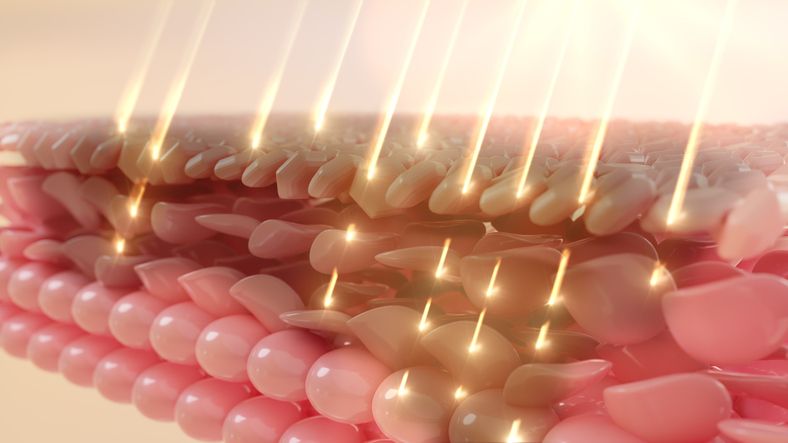
Natural remedies can help fade freckles, but they may not be enough for those seeking permanent freckle removal. If you’re serious about how to remove freckles from the face with long-lasting results, professional treatments offer greater effectiveness. These procedures target melanin cells at a deeper level, ensuring smoother skin with fewer freckles over time.
1. Chemical Peels
Home remedies may help lighten pigmentation, but they often do not penetrate deep enough to remove persistent freckles. Chemical peels, on the other hand, use controlled exfoliation to remove old and damaged skin, revealing rejuvenated skin beneath.
• Deep and medium peels involve strong acids like trichloroacetic acid (TCA) or glycolic acid, which help break down freckles by accelerating skin cell turnover.
• These peels can effectively lighten freckles, age spots, and sun-damaged skin, but multiple sessions may be needed for optimal results.
• According to a 2018 study published in The Journal of Clinical and Aesthetic Dermatology, medium-depth chemical peels can significantly improve pigment irregularities, but patients must be mindful of sun exposure post-treatment to prevent new freckles from forming.
2. Intense Pulsed Light (IPL) Therapy
Although topical creams and serums can help fade freckles, they often fail to remove deeper pigmentation. IPL treatments offer a more advanced method by using broad-spectrum light to break down unwanted pigment in freckles, sun spots, and liver spots.
• IPL treatments are particularly effective for fair skin, as excessive sun exposure in lighter skin types leads to more freckles.
• A study in The Journal of Cosmetic and Laser Therapy (2020) found that IPL therapy can significantly reduce the visibility of freckles after three to five sessions, with minimal skin damage.
• However, IPL may not be ideal for darker skin types due to the risk of hyperpigmentation, making it less suitable for everyone.
3. Cryotherapy (Liquid Nitrogen Treatment)
For those seeking instant results, cryotherapy is sometimes considered for freckle removal. However, while it can freeze and destroy freckles, it does not always provide even results and carries some risks.
• Liquid nitrogen treatment works by freezing melanin cells, causing the treated area to peel off over time.
• While effective in removing some freckles, it is not widely recommended because of its high risk of scarring and discoloration, especially for sensitive skin.
• According to The Journal of Dermatologic Surgery (2019), cryotherapy is more commonly used for wart and mole removal rather than freckle treatments, as lasers offer safer, more predictable outcomes.
4. Laser Freckle Removal (The Most Effective Method)
While home remedies and topical treatments may require months to show minimal improvement, laser freckle removal provides fast, effective results by breaking down deep pigmentation. Among all freckle removal treatments, laser therapy is considered the gold standard—and PicoCure Pigmentation Removal Treatment is the most advanced solution for achieving a freckle-free look.
PicoCure Pigmentation Removal Treatment: The Secret to Flawless Skin
Unlike traditional freckles laser treatment, PicoCure Pigmentation Removal Treatment utilizes cutting-edge picosecond laser technology to shatter unwanted pigment while preserving the surrounding skin.
• Traditional laser treatment to remove freckles uses nanosecond technology, which can cause heat damage to the skin.
• PicoCure works at an ultra-fast speed, reducing thermal injury and making it safer for even sensitive skin.
• Studies published in The Journal of Lasers in Medical Sciences (2021) confirm that picosecond laser therapy achieves superior freckle removal results compared to older Q-switched lasers, with fewer side effects and shorter recovery time.
How It Works
• High-energy laser pulses precisely target melanin cells, fragmenting them into tiny particles.
• The body’s natural lymphatic system then eliminates these pigment fragments, leading to fewer freckles over time.
• Unlike IPL or chemical peels, PicoCure can safely treat even persistent freckles while minimizing damage to the surrounding skin.
Why PicoCure Is the Best Freckle Removal Treatment
• Painless, non-invasive treatment that requires no downtime.
• Visible improvement after the first session, with full results appearing within a few weeks.
• Long-term freckle removal with a low risk of side effects compared to cryotherapy or deep chemical peels.
If you’ve been wondering can you get freckles removed permanently, PicoCure offers one of the most effective solutions available today, providing a safe and advanced way to achieve clearer, smoother skin.
Common Mistakes to Avoid
Even with the best freckle removal treatments, improper aftercare can lead to new pigmentation issues. Here are critical mistakes to watch out for:
Skipping Sunscreen
Even after freckles fade, UV rays can trigger more freckles and cause sun damage. Unprotected sun exposure increases melanin production, undoing treatment results and leading to uneven skin tone.
Ignoring Professional Advice
After laser freckle removal, chemical peels, or IPL treatments, following your specialist’s aftercare guidelines is crucial.
• Using harsh skincare too soon can lead to irritation and post-inflammatory pigmentation.
• Not following recommended skincare can slow healing and affect treatment outcomes.
Want to enjoy a brighter, freckle-free complexion for the long term? Pairing professional freckle removal treatments with proper post-care ensures long-lasting, flawless skin. Book a consultation today to discover the best treatment for freckles and get expert guidance on maintaining your results!
PicoCure Pigmentation Removal Treatment免費體驗
PicoCure Pigmentation Removal Treatment
1 Minute Self-Registration
Date should not be before minimal date
FAQ

1. Is laser treatment safe for treating freckles on all skin colors?
Yes, but laser treatment works best for lighter skin tones because the laser targets melanin cells. Those with darker skin should consult a skin care professional to assess the risk of hyperpigmentation. Advanced technologies like PicoCure Pigmentation Removal Treatment are designed to treat freckles safely across various skin colors with minimal side effects.
2. Can intense pulsed light therapy (IPL) be used to remove darker freckles?
Yes, intense pulsed light therapy (IPL) can effectively lighten and remove darker freckles by breaking down unwanted pigment in the human skin. However, it may require multiple treatment sessions to achieve optimal results. Individuals with normal skin or fair skin tend to respond better to IPL treatments, while those with darker skin tones should seek expert advice to avoid pigmentation issues.
3. Does removing freckles increase the risk of skin cancer?
No, freckle removal does not increase the risk of skin cancer. However, freckles form due to sun exposure, which is a key risk factor for skin cancer. This is why it's essential to prevent freckles from returning by wearing SPF 50+ sunscreen daily and following a healthy skincare routine.
4. Can laser treatment also help remove unwanted hair along with freckles?
Yes, some laser treatment devices target both unwanted hair and pigmented spots. However, lasers designed specifically for treating freckles work differently than those used for hair removal. If you’re considering both treatments, consult a skin care professional to determine whether combining them is safe for your skin type.
5. How can I prevent freckles after a treatment session?
To prevent freckles from reappearing after a treatment session, applying sunscreen daily with SPF 50+ is crucial, even on cloudy days, as UV rays can penetrate through and stimulate melanin production. Avoiding excessive sun exposure by seeking shade and wearing protective clothing, such as wide-brimmed hats and sunglasses, can further reduce the risk of new freckles forming. Using skincare products rich in antioxidants, like Vitamin C, helps to maintain healthier skin by neutralizing free radicals and preventing pigmentation buildup.






